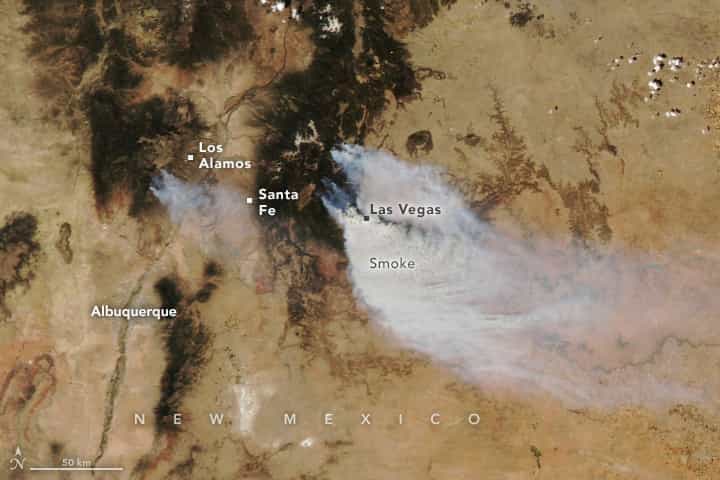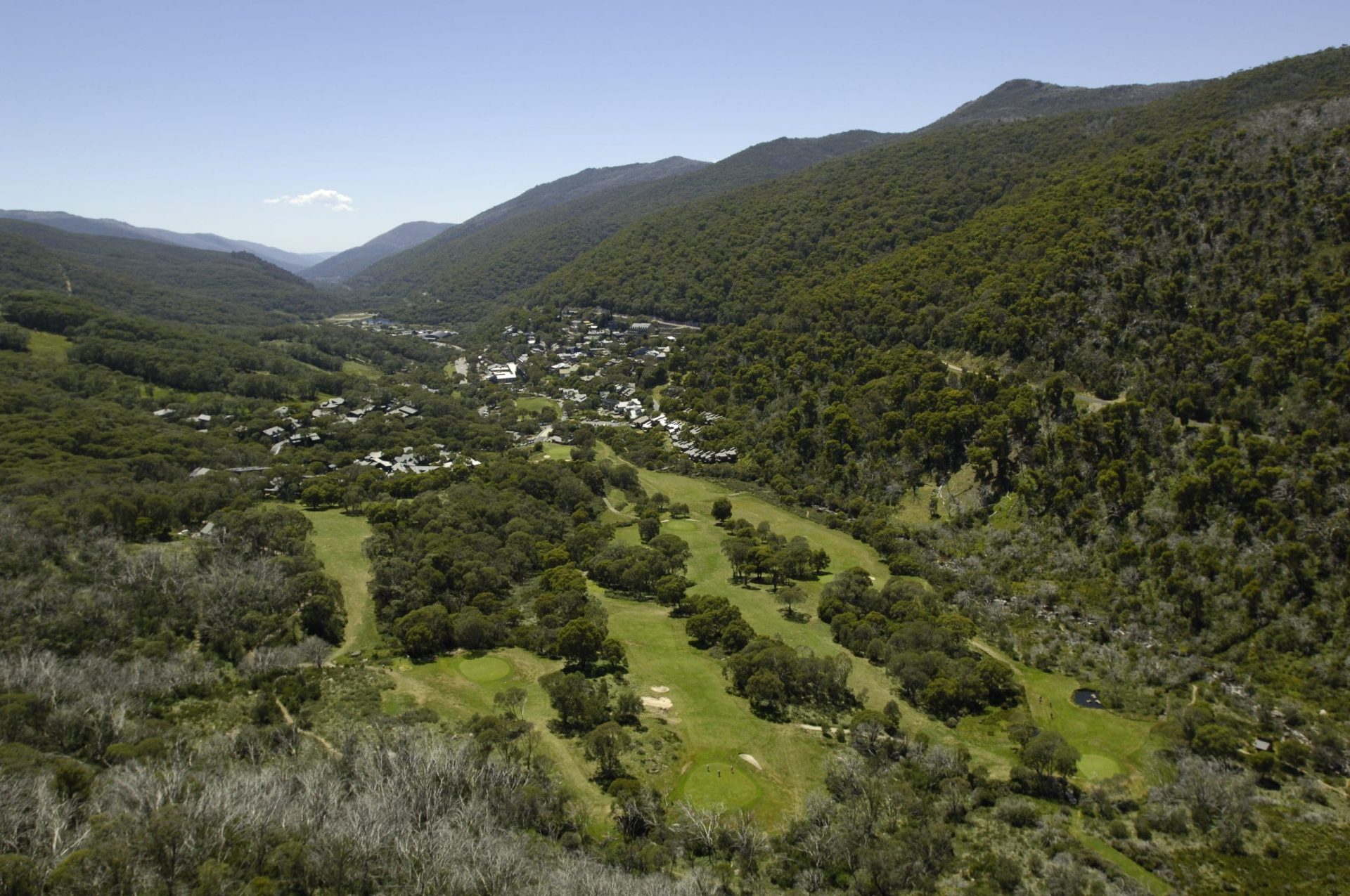
Early season wildfires continued to rage in the first week of May 2022 in northern New Mexico. The blazes have been driven by high winds, low humidity, and exceptionally dry tinder—grass, brush, and timber—that are providing ample fuel for burning. The fires have destroyed hundreds of structures and prompted the evacuation of thousands of homes. On May 3, 2022, seven large fires were still burning across the state.
The natural-color image above was acquired on May 3 by the Moderate Resolution Imaging Spectroradiometer (MODIS) on NASA’s Aqua satellite.
Earlier in the week, a few days of cooler, slightly more humid weather provided a brief respite before drier, windier conditions brought red flag warnings back to the state. More than a thousand firefighters are battling the Calf Canyon-Hermits Peak fire, two fires that merged on April 22-23 to form one of the largest wildfires in state history.
As of May 3, the Calf Canyon-Hermits Peak complex had burned more than 145,000 acres northwest of the historic town of Las Vegas, New Mexico; the fire was 20 percent contained. The Hermits Peak fire started as a prescribed burn in part of the Santa Fe National Forest on April 6, but erratic, gusty winds blew it out of control.
The Cerro Pelado fire burning southwest of Los Alamos started on April 22 and quickly spread across 5,000 acres, prompting evacuations of some nearby communities. As of May 3, the fire had burned more than 25,000 acres and was 10 percent contained. Incident commanders predicted extreme fire behavior to continue as high winds pushed the fire into extremely dry fuels to the northeast and southeast. As of May 2, the fire was burning about 10 kilometers (6 miles) southwest of Los Alamos National Laboratory. Nearby Valles Caldera National Preserve and Bandelier National Monument were closed until further notice.
About 80 kilometers (50 miles) north of Las Vegas, the 60,000-acre Cooks Peak fire, which started on April 17, was 72 percent contained on May 3.
According to the U.S. Drought Monitor on April 26, 2022, approximately 99 percent of the state was experiencing drought, with 83 percent facing extreme to exceptional dryness. New Mexico has had 211 fires so far this year, burning a total of 230,000 acres. In all of 2021, 672 fires burned nearly 124,000 acres, according to the National Interagency Fire Center.
MODIS sensors have also imaged burn scars from the New Mexico fires. Many NASA satellites and instruments are used to detect actively burning fires, track the transport of smoke, provide information for fire managers, and map the extent and severity of burn scars. Satellites are often the first to detect wildfires in remote regions.
This post first appeared on NASA Earth Observatory and was written by Sara E. Pratt. NASA Earth Observatory image by Lauren Dauphin, using MODIS data from NASA EOSDIS LANCE and GIBS/Worldview.




